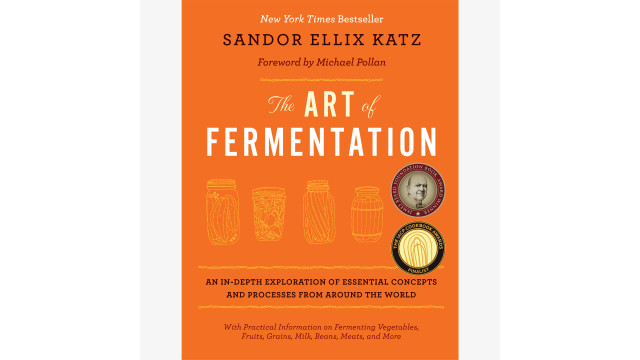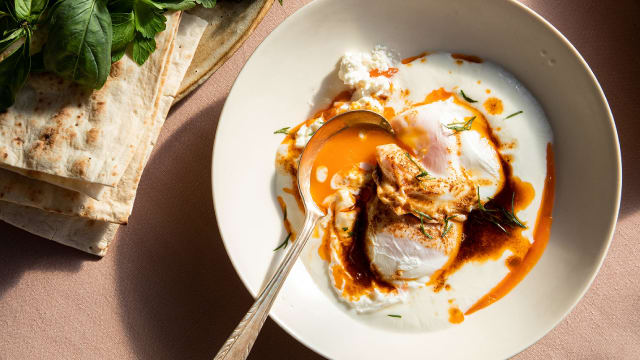Brewing Kombucha

Something magical often happens when kombucha comes into people’s lives. That moment of Kombucha Kismet is often a bright dividing line between a life ruled by inertia and a path of conscious choice.
—Hannah Crum and Alex LaGory, The Big Book of Kombucha
When I started making kombucha at home in 2018, I thought I knew what I was doing. I mean, I didn’t know how to make it before I started, but I thought I knew what was going to happen: instead of spending $4 or $5 per bottle to buy the slightly fermented tea at retail, I was going to pay just a fraction of that. Plus, I was going to oversee flavoring, which put the power of choice in my own hands, not some store’s. And theoretically I would always have kombucha on hand, instead of constantly running out. That’s a trifecta: cheaper, more choice, and available on demand. What else could a man want?
A simple gustatory hobby
Four years later, I am happy to report that I had no idea what kind of journey I was embarking on when I bought my first SCOBYs – the symbiotic culture of bacteria and yeast that lies at the heart of any kombucha operation — and added them to three gallons of sweet tea. That first batch took forever, as I started it in Brooklyn in February, and kombucha won’t get out of bed in the morning if it’s not at least 65 degrees Fahrenheit. But that slow start masked the onset of an obsession that would soon take over almost all aspects of my life. I kid you not: What started as a hobby has changed my relationship with my entire existence.
Before I go on, let me assure you that I’m not talking about mastering some highly technical skill. Kombucha might just be the simplest gustatory hobby in existence. Here’s how you make it: brew a few gallons of sweet tea. Add your SCOBY. Wait a few days while it ferments. Bottle it and flavor it. Wait a few more days while it carbonates. Put it in the fridge. Wait once last time. Then drink it. The whole process is just about waiting. Or, put another way, it’s about timing. Like many of life’s great pleasures, you just have to get the timing right, and you’re good.
Here's where it starts to get interesting: With all the time you have while waiting, you get to wonder about the flavors you’re going to use. For a while, I thought the glory of kombucha was all the flavors. You can, within reason, make kombucha pretty much any flavor you want, from citrus to berries to herbs and spices and beyond. Hannah Crum, author of The Big Book of Kombucha, even has a recipe for avocado kombucha. It’s next on my list. The choices, you might say, are endless.
Probiotic flavors
But somewhere along the way, I realized that the amazing thing about kombucha isn’t the flavor itself. It’s that you can make it any flavor you want it to be. When you pick your flavors, you make choices, but the real magic of kombucha lives in the space right before that choice — in the land of possibility. Where is possibility? It is the place where now is born, the seed of all happenings, and the source of everything new.
I can’t tell you how many different flavors of kombucha we have made in this house — well over 100 — and we’re never going to stop experimenting with new ones. The current favorite is lavender-mint, with both ingredients grown right here at home. I’m not exaggerating when I say that we experience God-like power when we brew each batch. We create every new flavor, and we bring each batch into existence, making sure the conditions are right for the SCOBY to do its thing. It is my kombucha universe; the rest of you are just visitors in it.
The fact that we try to use our own ingredients for flavoring adds a whole other dimension to our brewing operation. My wife Joey is a careful, conscientious, and loving gardener — she communicates with the plants. She doesn’t just grow a lot of our kombucha flavors; she grows a lot of our food, period. And while my involvement in the garden is largely limited to asking for new kombucha ingredients, that’s an almost infinite increase over my previous interest in said garden. We grow the following flavors: mint, chamomile, lemon verbena, elderberry, chokeberry, raspberry, blackberry, rosemary, sage, basil, and jalapeño. One of my fantasies is that we have a line of seasonal flavors. Oh, I forgot to mention that our kombucha has a name: Rockledge Rasa. Rockledge is the name of our house, given to it by a previous owner about 100 years ago. And in Sanskrit rasa means juice. Or essence. The thingness of a thing.
Why essence? Because kombucha, unlike juice, contains barely any sugar or calories. Yes, I did say you start with sweet tea, but the SCOBY eats all the sugar. What’s left is a probiotic taste sensation that brings all the benefits of flavor without any of the costs. The tea acts as a platform. All you have to do is add a pinch of flavoring; a tablespoon of berries will flavor an entire gallon of kombucha. If it’s blackberry kombucha, in other words, you’re not drinking blackberry juice but just the essence of blackberry.
It turns out the tongue and the brain are perfectly happy with the essence of a flavor when it comes to enjoyment. How do I know that? Because kombucha made me a scientist, too: We experiment with flavors until we get just the right taste. In other words, we are scientists of experience, not of theory. It still has to taste good in the end.
I should make one last important point here: I drank too much alcohol when I was younger. Way too much alcohol. One of the reasons I found it difficult to stay away from alcohol was that nothing else seemed as interesting, both in terms of taste (the varieties of wine and beer and spirits are countless) and intoxication. With kombucha, I found the answer to both questions.
As I said above, kombucha is practically synonymous with infinite choice. And while it doesn’t give you a buzz, it is good for you, with probiotic and other health benefits that make each glass of kombucha a gift to yourself. At 51 years old, I’ve turned a big corner in this thing called life, and I am less interested in making my body feel weird than I am in making it feel good. Kombucha is a living drink; it quite literally makes you high on life.
I could go on forever here, because the glories of kombucha are endless, but I won’t. What I will tell you is that I now give away as much kombucha as I make, and it makes me happy to give nutritious and tasty gifts to everyone I know. My favorite condiment is Stinging Kombucha Hot Sauce, which you can buy over the Internet. (Tell Karel I sent you!) We recently tried a kombucha soap from Kombucha Kamp, and I’m sold. Henceforth, I won’t just drink it, I will bathe in it.
Kombucha started as a hobby and became a force for good in my life. Everything is different now. If you don’t believe me, come on over and I’ll serve you one of the two flavors we have on tap in the living room, from our very own Kegerator. Making kombucha is about harnessing the power of possibility, about inhabiting the place right before everything happens. But drinking kombucha is different. That’s where the kegerator comes in: Because when I want my kombucha, I want it right now.
Key Takeaways
- Kombucha increases probiotic intake.
- It's a healthy alternative to alcohol.
- Brewing it can be a fun hobby.







